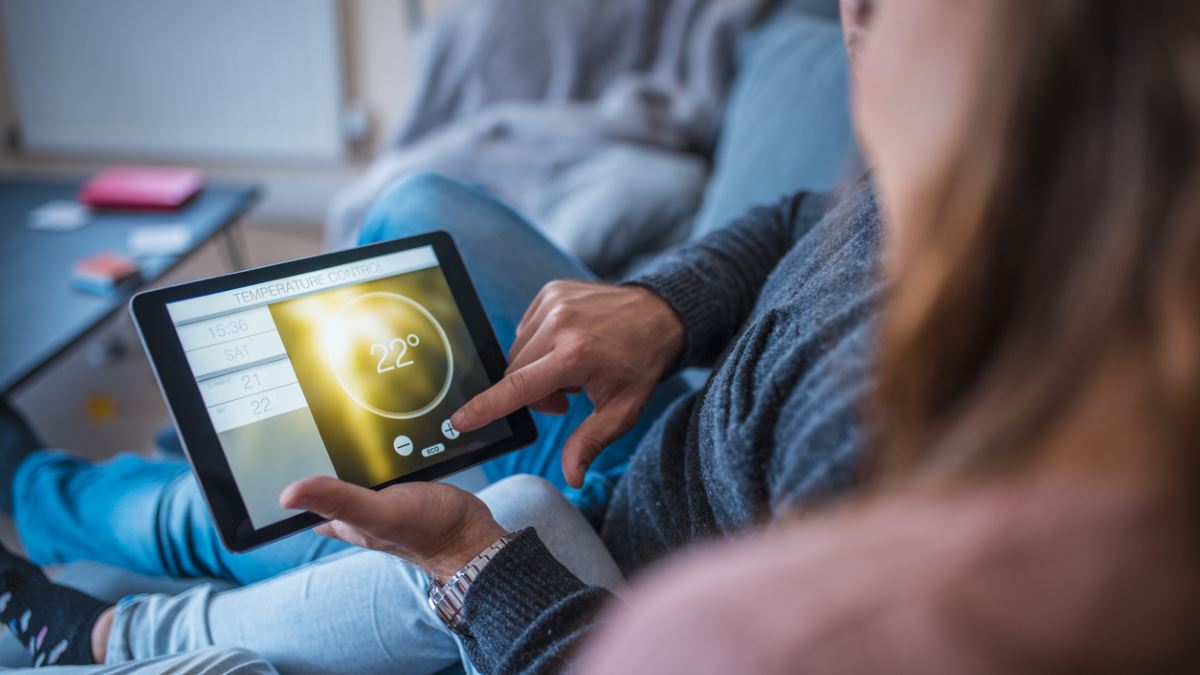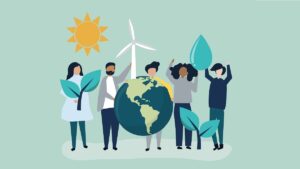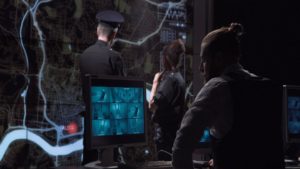It is increasingly important for humankind to be smart with energy. Energy requirements are rising across the globe. This is caused by factors such as urbanisation, rising global wealth and increasing computer use (in 2015, Google used 5.7 terawatt-hours of electricity, about as much as the city of San Francisco).
This increased energy use is linked to a number of major problems for human society, including climate change, pollution and dwindling energy resources. It is crucial that these problems are addressed.
There are four stakeholders involved:
- The power generators, a marketplace that is becoming increasingly fragmented as technological advances lower the barriers to entry;
- Government and regulatory bodies who are struggling to control and mitigate the damage caused to the environment and society;
- Consumers who are increasingly making demands on power companies and who are also increasingly becoming power producers (“prosumers”) in their own right;
- Technologists who are developing innovations such as digital energy networks that can be used to help solve the world’s energy problems.
These four sets of stakeholders have different insights into the problems caused by energy use as well as different needs for energy.
Hitachi recognises this. The company uses collaborative Social Innovation processes to address these problems in a way that develops commercially viable services that are also beneficial for wider society. And one area it pays particular attention to is that of digital energy networks.
Digital energy networks
Connected energy systems
Digital technology is an important part of the solution to global energy problems. Digital technology helps power companies deliver reliable power supplies by building resilience into networks.
Digital controls can be used to manage the flow of energy. Where one area is experiencing (or likely to experience) a shortage, supplies can be diverted from areas that have more than they need.
This redirection can be done at a very granular level. So for instance, if supplies are low they can be diverted to critical infrastructure such as hospitals, police stations, communications infrastructure, bank and food retailers at the expense of private homes, factories and offices.
The internet of Things (IoT) is enabling digital networks to gather more and more data about energy usage: more and more devices are delivering ever more granular information at shorter intervals. This increase in data enables usable insights about power asset health, grid load, and consumer behaviour.
Microgrids
Another development is the use of micro-grids. Traditionally, power grids were large and inflexible, with a constant amount of electricity flowing in a single direction from a power station to homes and businesses. Now, increasingly small and discrete energy grids enable supply and demand to be balanced locally.
One example is the Kashiwa-no-ha smart city in Japan where Hitachi is part of a public-private-academic partnership enabling people in the city of Kashiwa to ensure the efficient use energy by sharing electricity across buildings in the community as it is needed, reducing CO2 emissions. Local residents are given real-time information encouraging them to save energy. Importantly, in the event of an emergency, electricity distribution prioritises evacuation centres and infrastructure such as lifts and escalators.
These microgrids can be developed to use renewable energy sources. Ultimately, microgrids lead to “the energy cloud”, a distributed network of power supplies that can flex as demand changes.ed
Advanced power storage
Another important part of digital grids is new and better methods of power storage. Much renewable energy, including wind, solar and tidal is intermittent. Sometimes there is too much of it and because it can’t be stored, the renewable energy producer needs to be switched off.
This can be expensive if the energy producers are compensated. In the UK wind farms were paid over £50 million for shutting down turbines in 2014.
In addition, an intermittent supply means that you can’t rely on it. There may not be enough at times of peak demand and this means that other sources of energy must be brought in. Again this can be expensive.
The solution is to store power in large batteries. Up till now this has been difficult to achieve commercially. But advances in power storage means that it is likely that large scale power storage will become feasible in the near future.
And when this happens, renewable energy, despite its intermittent delivery, will become even more viable as a main source of power for cities and manufacturing.
Energy security
One problem with digital grids is that they are generally connected to the wider internet. This can leave them open to cyberattacks.
Most connected energy equipment is not well designed when it comes to cyber security. In some cases default passwords are hard-wired into control systems. In other cases old and unsupported operating systems are used.
While hackers have caused power networks problems in the past, there is increasingly an understanding of how to protect digital power systems from external threats.
Smart cities
While cities represent only 3 percent of global land use, they represent three quarters of energy consumption and 80% of CO2 emissions worldwide. Unfortunately, urbanisation is only set to increase and cities, housing half the world’s population today, are likely to house three quarters of all humans by 2050.
If cities are to have enough power for their increased populations, they need to be developed with smart energy technology. This can involve:
- Street and public space lighting that is only illuminated as needed; for instance it would be switched off or set on low power in periods of the night when no one is around.
- Energy efficient LED street lights that are powered by solar energy batteries in each lamp post
- Energy recycling, for instance an office building that uses air conditioning today could instead use a heat exchanger with the heat energy extracted from the office being converted into power for a factory
Smart buildings
Like whole cities, individual buildings can be built that incorporate smart energy use. Offices that use less energy are more easily rented and increase in value.
Smart offices
Around 80% of the cost of running an office building is taken up in operating it, and of that amount some 40% is the cost of energy. Obviously it makes a lot of sense to ensure that these costs are minimised.
There are three strategies here:
- Energy used for temperature control can be dialled up or down based on outside weather, the position of the sun and occupancy
- Energy used for lighting and temperature control can be based on occupancy so that energy is not wasted in unoccupied rooms
- Energy can be generated and stored by the building using solar power, geothermal energy and even wind turbines on the roof.
There is an opportunity to design commercial buildings so that energy use is managed at a granular level.
- The full building (a “microgrid” in its own right) will need to be managed so that there is sufficient, but not excessive power
- Individual floors, rooms and corridors (“nanogrids”) can also be managed individually depending on their requirements.
- At the other end of the scale a single desk top (a “picogrid”) has low power requirements but needs to have sufficiently high data rates (bandwidth).
Smart homes
Homes that use less energy release money for people to spend on more useful or enjoyable items. Energy savings can be achieved by better insulation or the use of highly efficient combined heat and power (CHP) boilers.
Increasingly though, energy saving is promoted through the installation of “smart meters” that give the home owner a very accurate estimate of the cost of the energy they are using at any one moment. This is likely to reduce their energy consumption as they try to save money.
In addition, the energy consumption in connected homes can be controlled centrally if required (e.g. in an emergency), or more likely residents could be encouraged to use less power in return for a benefit, possibly financial (demand-side management).
Prosumers
Consumers with smart meters and better insulation in their homes can reduce their energy consumption. But many are going further and becoming energy producers in their own right.
More and more homes have power-generating (photovoltaic or PV) solar panels, geothermal (or “ground source”) heat pumps, or even small wind turbines. About 3 million energy users in Europe are already generating at least some of their own power. By adding an energy storage system, prosumers are able to maximise the use of this energy
Prosumers can benefit through lowered power bills. And in some cases, when they are selling energy back to the grid, they might even make an overall profit.
Securing energy supplies
Reliability of supply is a central aim of any power strategy. Protecting supplies (i.e. protecting power generators and power distributors) from cyber criminals is a short term problem. The long term problems are perhaps harder to solve.
With dwindling sources of fossil fuel, new sources of energy are needed. Some of these, such as nuclear fusion, have been dreamed of for many years. Others, such as bacterial fuel cells, are only now being investigated.
On the whole though, while there are of course obstacles to the rapid development and roll out of new forms of power generation, the future does look rosy. Sustainable energy really does seem to be just around the corner.






